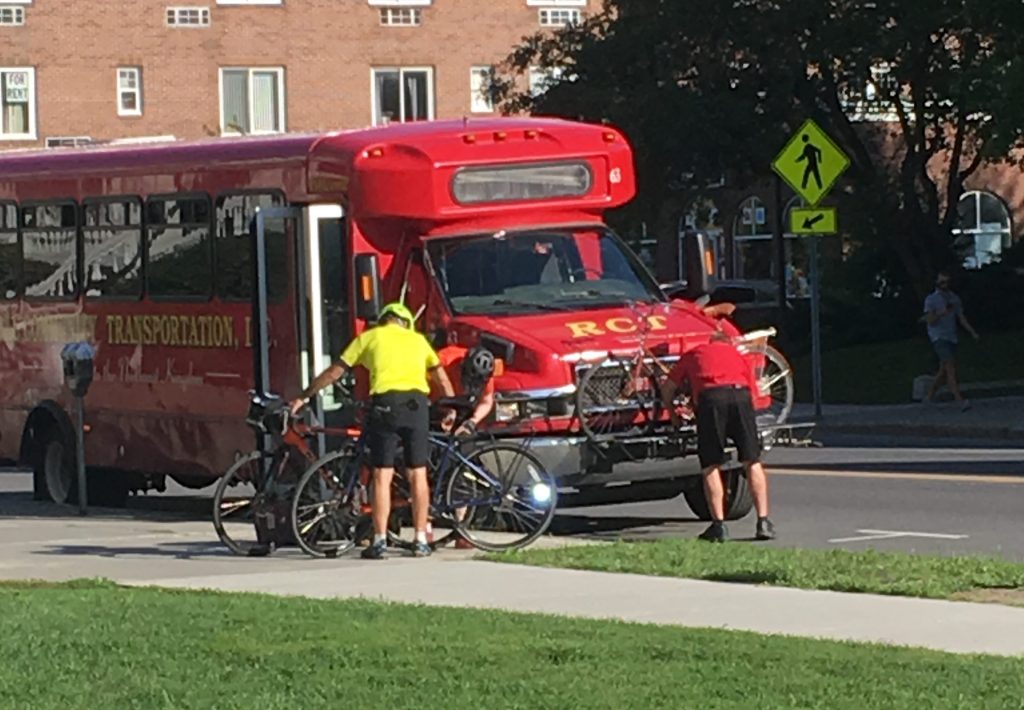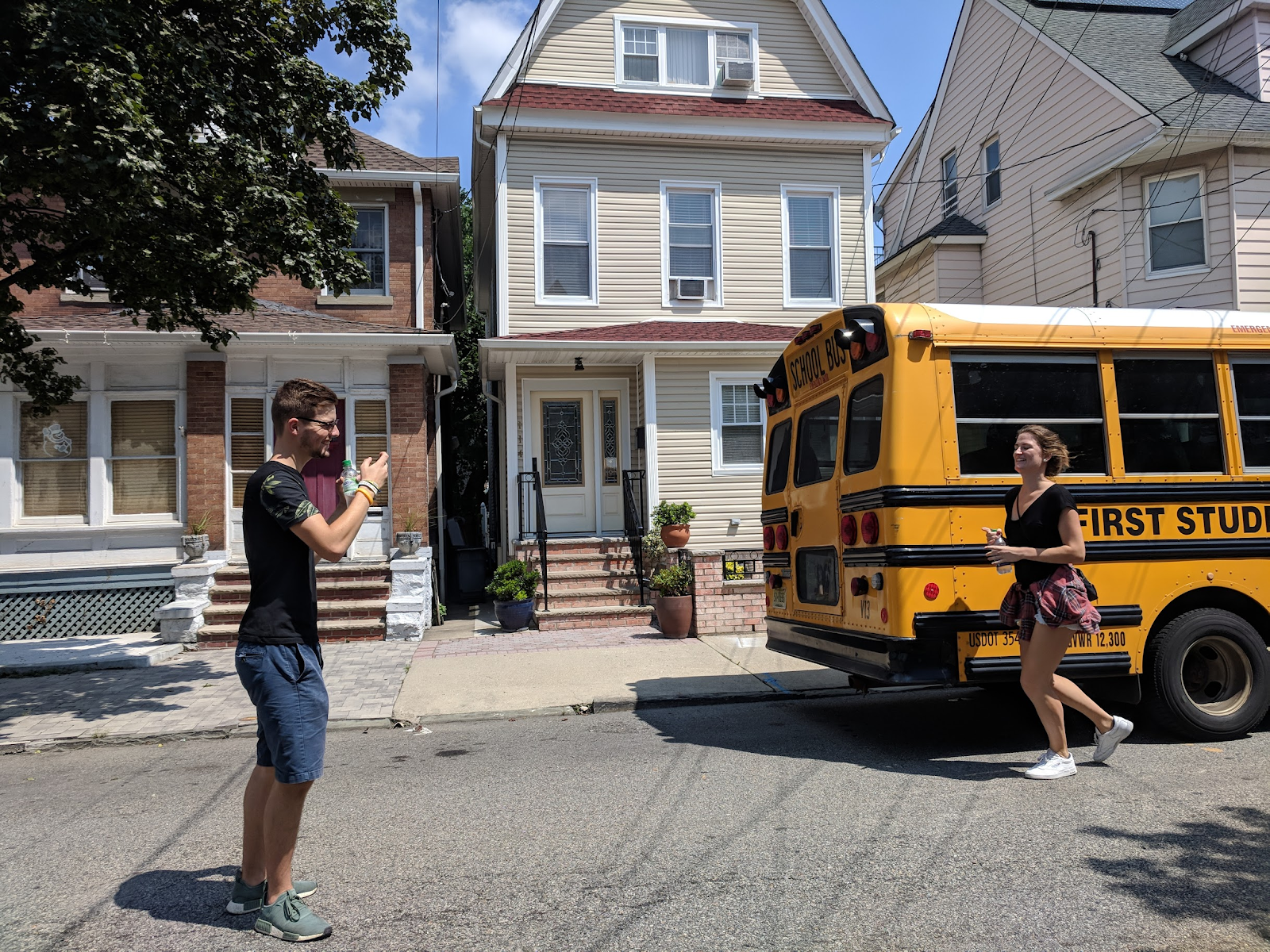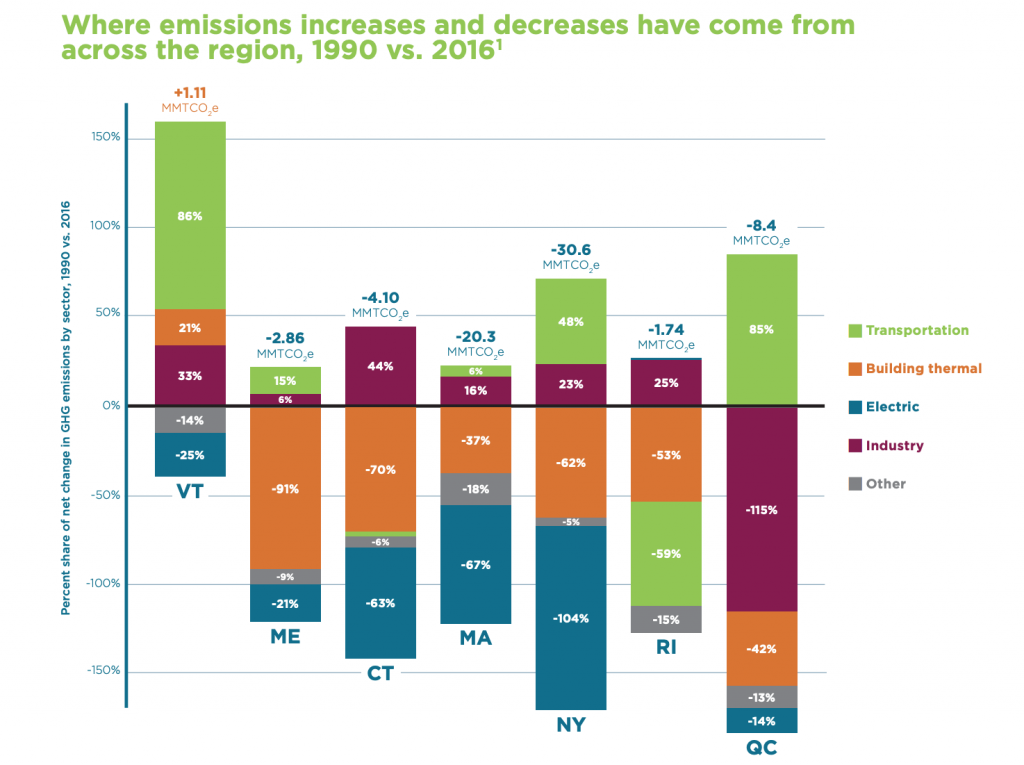By Eliana Fox
Before COVID-19, two of my European friends came to visit the U.S. We were walking on a quiet street when we saw a parked school bus. Much to my surprise they immediately asked to get their picture taken in front of it. “It’s so American!” they exclaimed.
In many countries outside of the United States, the big yellow school bus simply does not exist. Typically, school-aged kids travel to and from school in any number of ways: walking, bicycling, driving with parents, carpooling, and commonly, taking the existing public transportation. I don’t know that it’s helpful to compare Vermont’s transportation system to that of a European one, but the tourist photo-worthy uniqueness of America’s big yellow school bus does beg the question: What might be possible if Vermont’s school transportation needs were served by public transit?
Representatives from the Vermont Clean Cities Coalition (VTCCC), Vermont Energy Education Program (VEEP), Vermont Energy Investment Corporation (VEIC), Green Mountain Transit (GMT) and the Energy Action Network (EAN) built on this question with their pitch at the recent EAN annual summit. They asked:
What would it take to combine Vermont’s public, Medicaid, and school transportation into a single electrified public transportation system?
Currently each of these services operates independently, and with more than 450 school buses and 420 transit buses reaching every corner of Vermont, the project team contemplated the efficiencies of these systems, as well as the energy efficiency of the vehicles themselves.
Inspired by the diverse transportation needs of their respective stakeholders – particularly those who depend on public transit to meet their daily needs – and their collective work at Transportation For Vermonters (T4VT), the team received funding from EAN and from a Vermont Agency of Transportation Mobility and Transportation Innovations Grant to design a pilot project that will address this question.

Rural Community Transportation (RCT) serves the Northeast Kingdom and Lamoille County. Photo by Kate McCarthy.
In the coming year, the project team will research and design a pilot project to purchase and deploy small electric buses to serve 1-2 of Vermont’s rural school systems and their surrounding communities. The project will also include a detailed study to assess the opportunities and barriers of combining services: from right-sizing vehicles and optimizing service routes, to learning from fleet electrification experiences in Vermont and other states.
The project is built on the idea that there are multiple benefits that Vermonters can realize from combining and electrifying these transportation services:
- More rides to critical services would become available to underserved and vulnerable Vermonters (e.g. the elderly, disabled, low-income, rural, and youth).
- We would have cleaner air and healthier transportation for Vermont’s most vulnerable citizens as a result of replacing diesel buses with electric ones.
- There would be improved efficiency—more people in fewer vehicles—by using the same buses for both school and transit services.
- Transportation costs would decrease, benefitting Vermont’s citizens, school districts, and transit providers alike.
We know that the vision laid out by this project means potentially daunting societal change: Some families may feel uncomfortable putting their children on a public bus, and older adults might be uncomfortable around the higher energy levels of school-aged kids. But as with any potential challenge, there is also potential opportunity, such as creating a bus monitor system which could increase employment prospects for Vermonters, and providing more opportunities for intergenerational interactions.
This project addresses another unique, and unfortunate, aspect of transportation in the state. Vermont is very rural, but unlike our peer states in the Northeast, we are seeing an increase in overall greenhouse gas emissions with a majority of those emissions coming from our transportation sector. As the Energy Action Network notes in its 2019 Progress Report, our net increase in the share of emissions from transportation and thermal increased by more than any other state in the region. (See diagram below; click to enlarge.)
But rather than being an obstacle to making our transportation system more sustainable, Vermont’s rural layout provides us with the motivation to creatively re-imagine how we get around.
In light of the economic, environmental, and social justice issues that have been exacerbated by the COVID-19 pandemic, the project team thinks it is entirely possible, and necessary, that we can envision a successful rural transit system that is sustainable, accessible and equitable, well-used, and provides transport to necessary destinations.
My friends might have fewer school buses to take photos of the next time they are able to visit, but that leaves room for a greater appreciation of Vermont’s unique rural character and the possibilities that come with it.
Eliana Fox is a Research and Program Assistant at the University of Vermont’s Transportation Research Center (TRC). In her research role, Eliana explores innovative and best practices in bicycle count data collection. Beyond research, Eliana provides outreach and communication support for the TRC through website and social media development.





